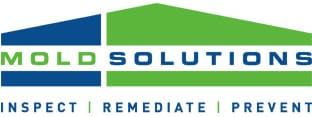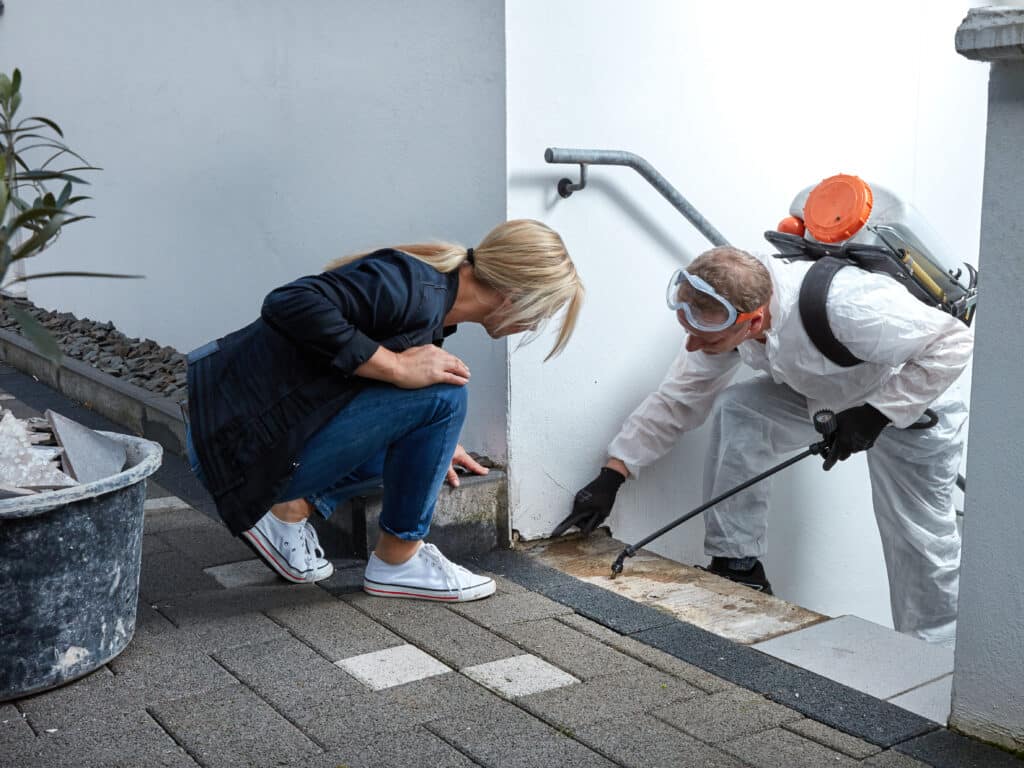Now that we’ve covered the basics of mold identification and remediation, and the steps you need to take if you notice mold growth, it’s time to talk about protection: protecting yourself and other residents, as well as protecting the building itself.
Table of Contents
Personal Mold Protection
[one_third]
[/one_third] [two_third_last] When inspecting or even handling mold-covered surfaces yourself, there are a number of ways to protect yourself from immediate exposure to mold. We’ve already talked about this, but it’s worth going into more detail:
[/two_third_last]
- Protect your skin. Wear a protective, airtight suit. If you don’t have one and the expense of getting one is too high, wear any old clothes that cover your whole body, and then throw them in the trash after you’re done. No skin should be left exposed except where necessary – usually this includes parts of the face. Gloves are also essential!
- Protect your lungs. the minimum recommended protection when dealing with mold is an N95 mask, but if you have a respirator with separate filter cartridges, you should ensure that you use a fine-grade P100 filter. Provided that the mask is a snug fit, this filter will block 99.9% of particles that are 3 microns or more in diameter.
- Protect your eyes. The cheaper respirator and face protection products don’t cover eye protection. In that case, wear any plastic goggles that are a snug, airtight fit.
One other thing that many people miss with mold infestation is that there might also be bacteria present, and that bacteria may be releasing endotoxins everywhere. Endotoxins are typically pyrogenic, meaning they’ll cause a fever or another type of inflammatory reaction.
If you notice any such symptoms after inspecting the seldom-visited crawlspaces, go and see a doctor as soon as possible.
After a remediation is complete, and the building’s been fixed, it’s time to repopulate the premises with – you guessed it – stuff!
But now the problem is – all of that stuff is probably ripe with either dust, mold spores or dead mold itself. Maybe even a hefty amount of moisture, as well, depending on where it’s been sitting; a basement, for example.
Keep in mind that toxicity-wise, your body doesn’t necessarily care if the mold is alive or dead. It’s still bad.
Mold-proofing Your Stuff: Furniture and Clothes
[one_third]
[/one_third] [two_third_last] After your stuff has been exposed to mold spores, it can later serve as a “fresh” source for new mold to spring from (given the right conditions). Cleaning porous and wearable materials can seem like a difficult job, but have no worries.
For clothes, the solution is washing it all with Borax, or other alternatives which aren’t aggressive on the textile colors. Car seats and furniture can be thoroughly vacuumed just for good measure. Your vacuum cleaner should be equipped with a HEPA filter, since the issue here is not just the odour, but mold spores as well.
[/two_third_last]
Protecting the Building
[one_third]
[/one_third] [two_third_last] Protecting the building itself is an extra expense, and really depends on the extent of the moisture problem as well as your budget. In this case we recommend consulting a professional mold remediation company before wasting money on unnecessary operations.
If needed, there are several ways to protect the building materials and surfaces using biodide and antimicrobial products. Some of these agents require very specific handling when used indoors so be sure to read the instructions carefully:
[/two_third_last]
- ULV fogging machines – the cold Ultra Low Volume foggers can be used to disperse any completely liquid disinfectant with ease. The disinfectants commonly associated with protection from mold are Concrobium and Anabec products.
- Directly applied disinfectant – although bleach might be efficient for clothes, it’s a different story altogether when used on some surfaces, its active substance doesn’t penetrate into wood, so any hyphae that goes deeper into the wood will still be there ready to sprout new mold. On these surfaces use something like MoldStat Plus or Fiberlock Shockwave disinfectant.
- Some have suggested using lime (the same lime used for soil amelioration) for controlling odours in crawl spaces. Although lime is used for this purpose, among other uses, it is not a stable long-term solution for mold prevention. Which leads us to our next common issue…
Why You Should Often Check for Mold
[one_third]
[/one_third] [two_third_last] Moisture problems are a recurring issue, especially in humid areas of the country. It doesn’t even necessarily have to be raining, as water can find its way into dry materials like wood or drywall paper simply from the day/night fluctuations of temperature and humidity.
Leaky pipes, broken roofs, lack of humidity control and ventilation – all of these can cause damp spots, and without water there can be no saprophytic decay. Luckily, with regular checkups, and even “nosing” around for musty odours, you can keep everything in top condition by reacting on-time and while there’s still a chance for a quick fix.
[/two_third_last]
Like bacteria, mold grows at an almost exponential rate in its preferred conditions – what starts out slow may soon turn into another big remediation, so stay safe and maintain your properties.
It’s a low effort solution over a longer period of time, and without a doubt the best thing you can do to protect your home from a large-scale infestation.
Why Product Reviews Can Be Misleading
[one_third]
[/one_third] [two_third_last] Whether you’re buying masks, filters, cleaning chemicals or anything else to aid you in your battle against mold, you’re likely to be searching for these products online.
[/two_third_last]
It’s extremely important not to just look at the product reviews, how many stars it has, what consumers comment on Amazon or wherever you’re looking. Here’s a couple of reasons for that.
Firstly, you might be looking at non-specific products like filters that behave exactly as advertised, but not blocking some gases that may be volatile compounds, emitted from the mold or bacteria themselves, or the damaged building material such as wood.
Second, when looking to protect your items and the building from a re-emerging infestation, note that it can take quite some time for recurring mold to become visible if the product/method was inefficient.
So if you’re reading reviews online about a product or service that advertises prevention, know that the people leaving the reviews might not have waited long enough to be sure enough of the effectiveness.
Saprophytic mold, feeding on things like wood or drywall paper, can take a month to visibly grow or even stay dormant until the right season comes – usually a combination of high humidity and moderate temperatures. This same mold can take 72 hours to grow in a petri dish in ideal lab conditions.
With that food for thought, feel free to write with any questions you might have or call us for consultations at Mold Solutions. We’ll do our best to try and help you out!











